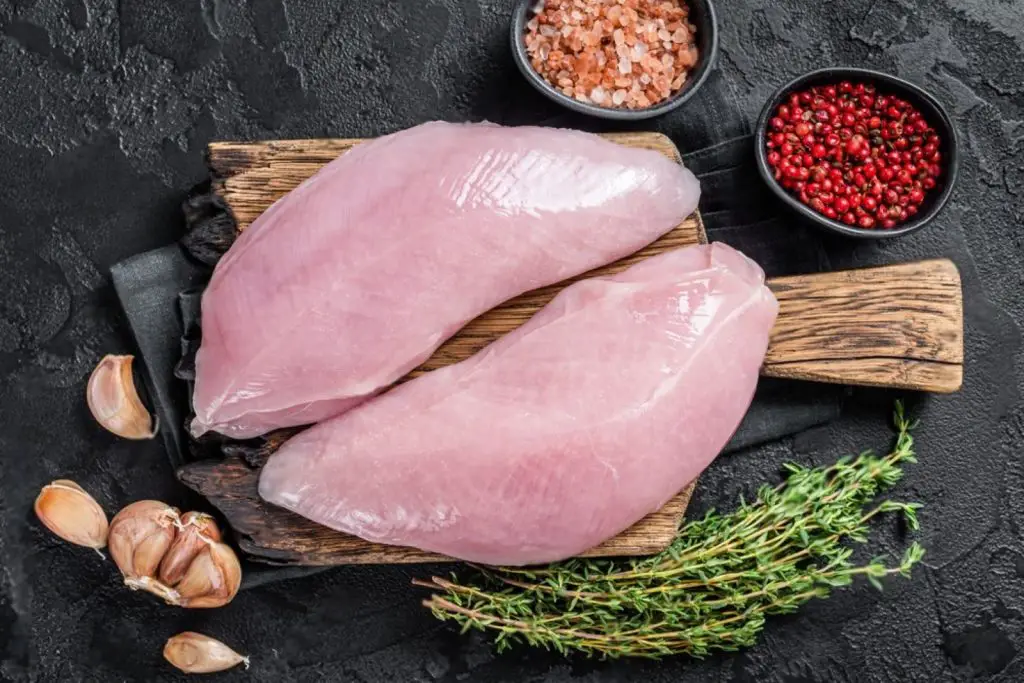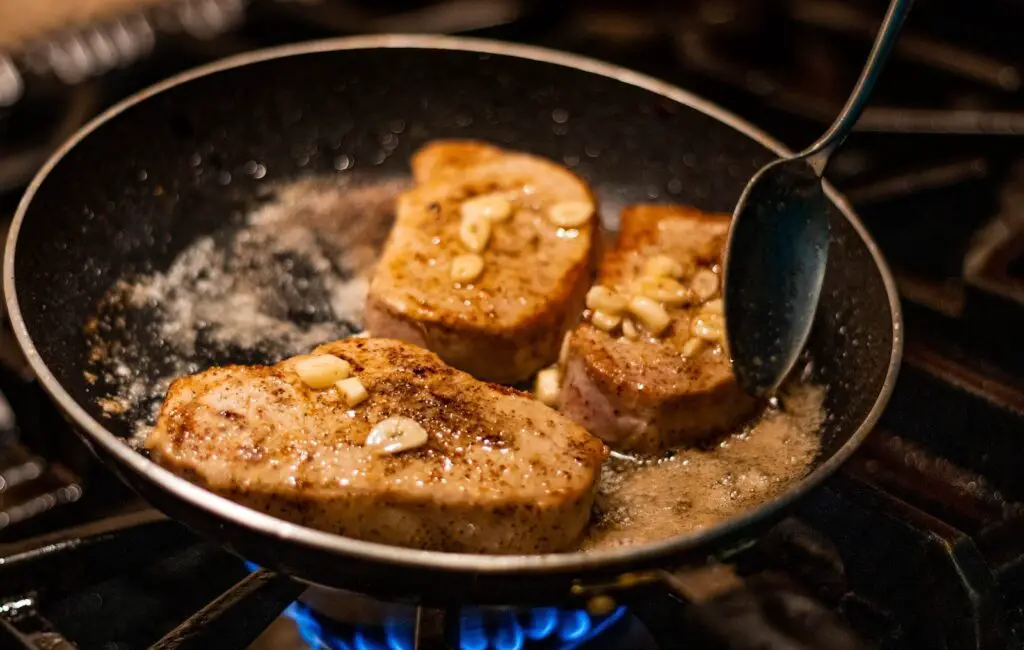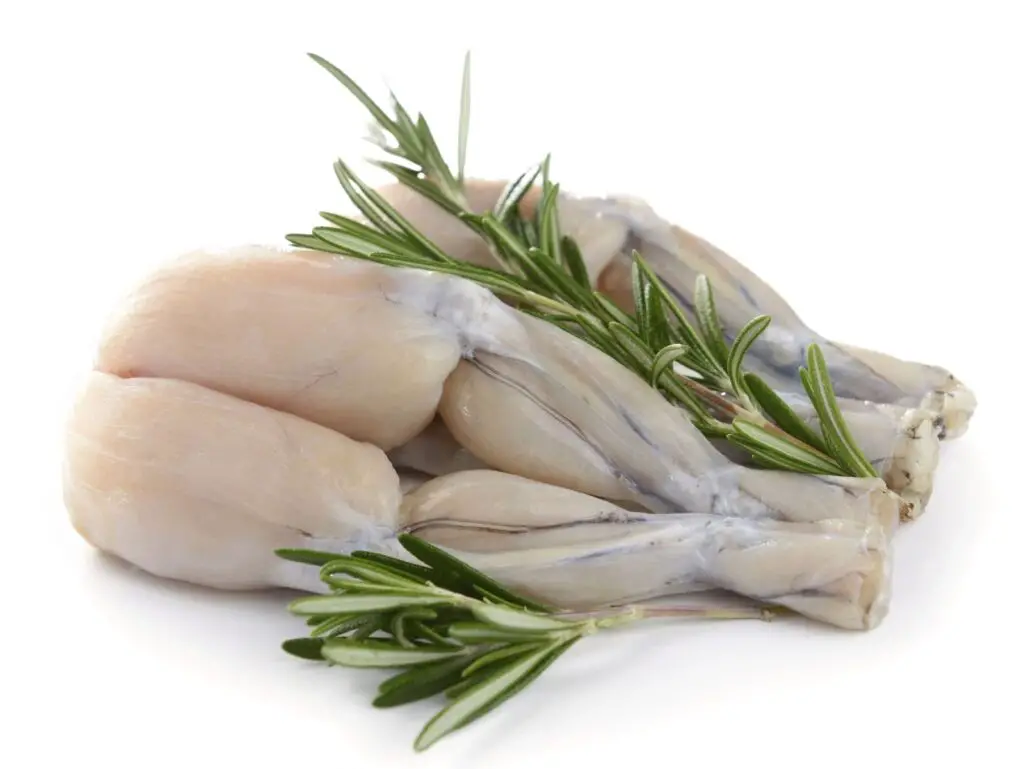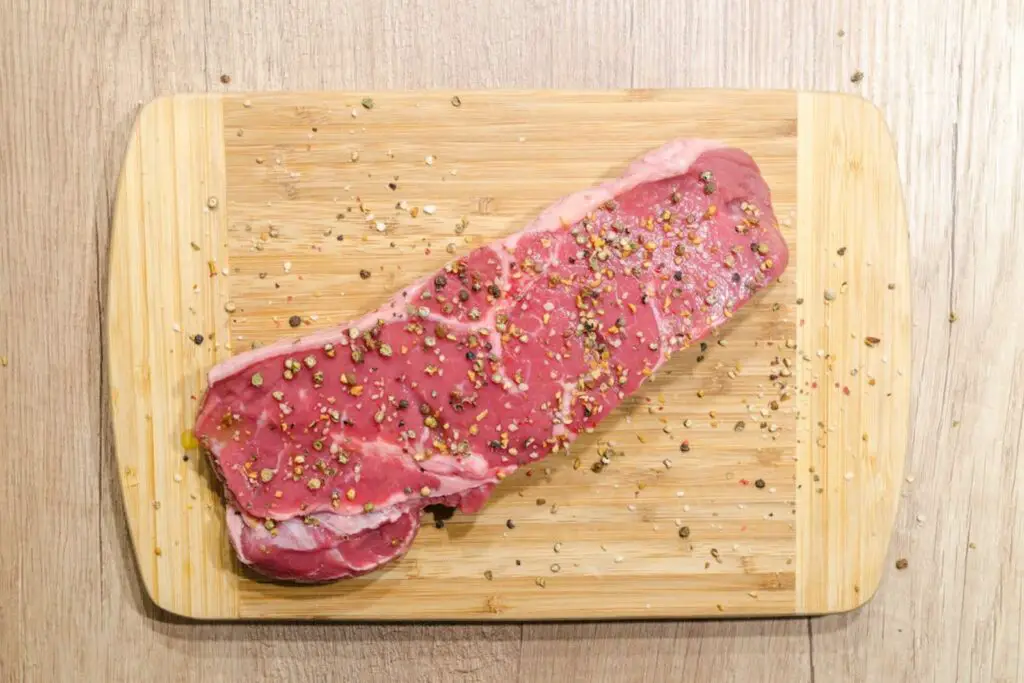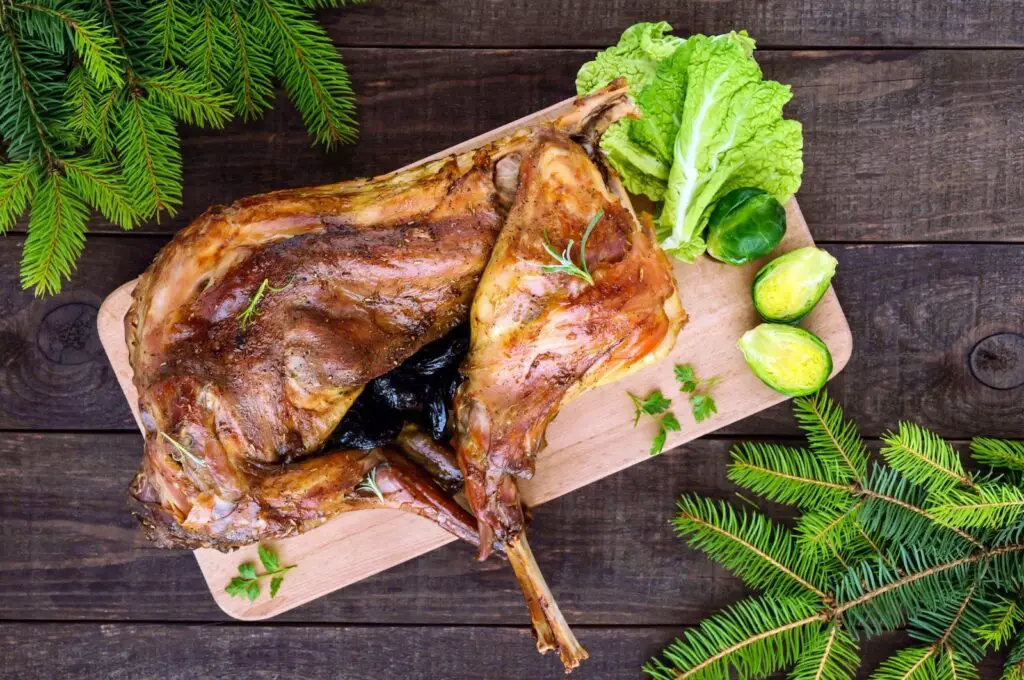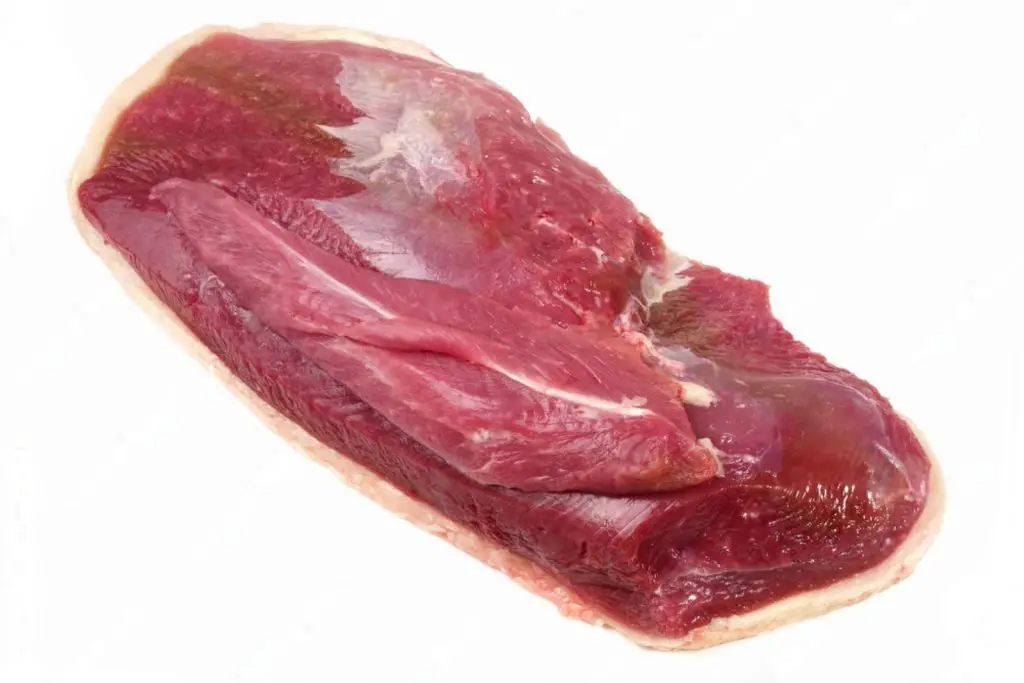
Country hams are a beloved delicacy, known for their rich flavor and distinctive taste. These hams are typically dry-cured and aged to perfection, resulting in a product that can be enjoyed on its own or used as a flavorful ingredient in various recipes. If you have a surplus of country ham or want to extend its shelf life, freezing is a great option. Freezing country hams properly can help maintain their quality and flavor for an extended period. In this article, we will provide you with a step-by-step guide on how to freeze country hams to ensure they remain delicious for future enjoyment.
Here’s a comprehensive guide on freezing country hams:
Step 1: Select a high-quality country ham
When it comes to freezing country hams, starting with a high-quality ham is essential to ensure the best results. Here’s why choosing a fresh and well-cured ham with a good marbling of fat is important:
- Freshness: Selecting a country ham that is fresh is crucial because it indicates that the ham has been recently processed and is less likely to have any spoilage or quality issues. Freshness is especially important when freezing the ham, as it helps preserve the flavor and texture.
- Curing: Country hams are typically dry-cured, a process that involves applying a mixture of salt, sugar, and other seasonings to the ham and allowing it to air-dry for an extended period. Proper curing not only enhances the flavor of the ham but also helps to preserve it. When choosing a ham, look for hams that have been properly cured according to traditional methods.
- Marbling of fat: The marbling of fat refers to the streaks or veins of fat running through the muscle of the ham. This fat contributes to the flavor, moisture, and tenderness of the ham. When selecting a country ham, look for a good marbling of fat throughout the meat. This fat will melt and baste the meat as it cooks, adding richness and juiciness to the ham.
Step 2: Prepare the ham for freezing
Once you have selected a high-quality country ham, the next step is to properly prepare it for freezing. Here’s why it’s important to remove packaging or netting, and how trimming excess fat can benefit the freezing process:
- Packaging or netting removal: Country hams are typically sold with some form of packaging or netting to protect them during transportation and storage. Before freezing, it’s essential to remove this packaging or netting from the ham. Leaving it on during freezing can cause moisture to become trapped, leading to the growth of bacteria or the development of off-flavors.
- Excess fat trimming: While country hams have a desirable marbling of fat, there may be areas with excessive fat. Trimming off excess fat is a personal preference and depends on how lean or fatty you prefer your ham. However, it is generally recommended to leave a thin layer of fat on the ham before freezing. This thin layer acts as a natural barrier, helping to prevent the ham from drying out during the freezing and thawing process.
By removing any packaging or netting and trimming excess fat before freezing, you are taking steps to ensure the quality and flavor of the country ham are preserved. It allows for better airflow and prevents potential issues that can arise from excessive moisture or unwanted flavors. Additionally, leaving a thin layer of fat on the ham helps maintain its moisture content, resulting in a more succulent and flavorful ham when it is eventually thawed and cooked.
Should I remove the bone before freezing country ham?
The decision to remove the bone from the country ham before freezing is a personal preference. Freezing a bone-in ham can help preserve its flavor and moisture, as the bone adds depth and richness. However, if you prefer easier slicing or have limited freezer space, you may choose to remove the bone before freezing.
Step 3: Wrap the ham tightly
After preparing the country ham for freezing, the next crucial step is to wrap it tightly before placing it in the freezer. Here’s why it’s important to wrap the ham tightly in either plastic wrap or aluminum foil, and how it helps prevent freezer burn:
- Exposure to air: When food is exposed to air in the freezer, it can lead to a condition known as freezer burn. Freezer burn occurs when the moisture on the surface of the food evaporates, leaving it dehydrated and resulting in unpleasant texture and taste. By tightly wrapping the country ham, you create a protective barrier that limits its exposure to air, reducing the risk of freezer burn.
- Choice of wrapping materials: Plastic wrap and aluminum foil are both effective options for wrapping country hams before freezing. Plastic wrap creates an airtight seal, while aluminum foil offers an extra layer of protection against air and helps maintain the ham’s moisture. Whichever material you choose, ensure that the entire ham is covered and sealed tightly to provide maximum protection.
- Preventing moisture loss: Tightly wrapping the ham not only prevents air exposure but also helps retain its moisture content. This is particularly important for country hams, as they can be prone to drying out during the freezing process. Maintaining moisture within the ham helps preserve its tenderness and flavor, ensuring a delicious result when it is eventually thawed and cooked.
Can I freeze sliced country ham?
Yes, you can freeze sliced country ham. It is recommended to place individual slices in airtight containers or wrap them tightly in plastic wrap or aluminum foil before freezing. This allows for easy portioning and thawing when needed.
Are there any special considerations for freezing country ham in slices?
When freezing country ham in slices, it is important to separate the slices with wax or parchment paper to prevent them from sticking together. This allows for easy portioning and prevents the need to thaw the entire package when you only need a few slices. Properly wrapped and labeled, the sliced country ham can be frozen and used conveniently.
Can I freeze a spiral-cut country ham?
Yes, you can freeze a spiral-cut country ham. Wrap the spiral-cut ham tightly in plastic wrap or aluminum foil, ensuring all cut surfaces are covered. Place it in a freezer-safe container or bag, and freeze it according to the recommended freezing guidelines.
Step 4: Place in a freezer-safe container or bag
Once you have tightly wrapped the country ham, the next step is to place it in a freezer-safe container or bag. This additional layer of protection serves two important purposes: preventing the ham from absorbing odors or flavors from other foods in the freezer and providing further insulation against freezer burn. Here’s why it’s important and how it benefits the frozen ham:
- Odor and flavor absorption prevention: Foods stored in the freezer can release odors and flavors that can be absorbed by neighboring items. By placing the wrapped ham in a freezer-safe container or bag, you create a barrier that helps prevent the ham from picking up any unwanted smells or tastes. This is particularly important for country hams, as their distinct flavor can be easily affected by external odors.
- Isolation from other foods: Placing the ham in its own dedicated container or bag helps keep it separate from other items in the freezer. This isolation reduces the chances of physical contact with other foods, minimizing the risk of cross-contamination and maintaining the ham’s individual taste and quality.
- Insulation against freezer burn: Freezer-safe containers and bags provide an additional layer of insulation for the ham, reducing the risk of freezer burn. Freezer burn occurs when food is exposed to air, causing moisture loss and resulting in a dry, unpleasant texture. By creating a sealed environment within the container or bag, you help maintain the ham’s moisture content and protect it from freezer burn.
Step 5: Label and date the package
After placing the wrapped ham in a freezer-safe container or bag, it is essential to label the package with the date of freezing and a clear identification of the contents, such as “country ham.” Here’s why labeling and dating the package is important and how it benefits the overall freezing process:
- Organization and easy identification: Labeling the package with the name “country ham” makes it easier to locate in the freezer, especially if you have multiple items stored. This simple step helps you quickly identify the ham without needing to unwrap or inspect each package. It saves time and minimizes the chances of accidentally defrosting or disturbing other items when searching for the desired ham.
- Tracking freezing time: By clearly writing the date of freezing on the package, you can easily keep track of how long the ham has been stored in the freezer. This information is crucial for maintaining the quality and safety of the ham. It allows you to prioritize the usage of frozen items based on their age and ensures that you consume the country ham within a recommended timeframe for optimal taste and texture.
- Preventing food waste: Properly labeling and dating the package helps prevent food waste. It enables you to have a clear record of when the ham was frozen, making it easier to determine its freshness and whether it is still suitable for consumption. By having this information readily available, you can avoid mistakenly keeping the ham in the freezer beyond its recommended storage duration.
- Overall organization and food safety: Labeling and dating the package contribute to a well-organized freezer and promote food safety. It helps you maintain an inventory of frozen items and ensures that you can track and rotate them accordingly. This practice reduces the likelihood of food spoilage, enhances overall food quality, and promotes a safe and efficient freezing process.
Step 6: Freeze the ham
After properly labeling and dating the package, it’s time to place the wrapped and labeled ham in the freezer. Here’s why it’s important to store the ham in a flat position and maintain the ideal freezing temperature:
- Preservation of shape: Storing the ham in a flat position helps maintain its shape during the freezing process. If the ham is stored in a standing position, it may develop uneven pressure points or deformities. By laying it flat, you ensure that the ham retains its desired shape, making it easier to handle and slice when it’s time to thaw and prepare.
- Even freezing: Placing the ham in a flat position also promotes even freezing. This allows the ham to freeze uniformly, preserving its texture and flavor. Uneven freezing can result in a loss of moisture, compromising the ham’s quality and tenderness. By ensuring the ham is flat, you minimize the risk of inconsistencies in freezing and subsequent thawing.
- Ideal freezing temperature: It is crucial to freeze the ham at the recommended temperature of 0°F (-18°C) or below. Freezing at this temperature prevents the growth of harmful bacteria and helps maintain the ham’s freshness and quality. The low temperature ensures that the natural enzymes in the ham slow down, preserving its flavor, texture, and overall integrity.
- Proper freezer conditions: It’s important to note that the freezer should be set to the appropriate temperature and have sufficient airflow to maintain consistent freezing conditions. Ensure that the freezer is not overcrowded, as this can affect the overall freezing process. Proper organization and adequate space allow for optimal airflow, promoting efficient freezing and preserving the ham’s quality.
How long can frozen country ham be stored?
Frozen country ham can be stored for up to 1 year without significant loss in quality. However, for the best taste and texture, it is recommended to consume it within 6 months of freezing. Proper storage conditions and tightly sealed packaging are crucial for maintaining the ham’s freshness.
Step 7: Thaw and enjoy
Once you’re ready to enjoy the country ham, it’s essential to thaw it properly to preserve its quality, texture, and flavor. Thawing in the refrigerator is the recommended method due to its safety and ability to maintain the ham’s integrity. Here’s why slow thawing in the refrigerator is preferred and how to determine the appropriate thawing time:
- Preserving quality and texture: Thawing country ham in the refrigerator is the safest method to maintain its quality and texture. The gradual thawing process in a controlled environment prevents abrupt temperature changes, which can compromise the ham’s flavor and texture. Thawing in the refrigerator allows the ham to retain its moisture and tenderness, resulting in a more enjoyable eating experience.
- Food safety considerations: Thawing at room temperature or using quick-thawing methods like hot water can lead to uneven thawing, promoting bacterial growth and compromising food safety. Refrigerator thawing minimizes the risk of bacterial contamination, as the low temperature inhibits the growth of harmful microorganisms.
- Determining thawing time: The general guideline for thawing country ham in the refrigerator is approximately 24 hours of thawing time for every 5 pounds (2.3 kg) of ham. However, it’s important to note that this is an estimate, and the actual thawing time may vary depending on factors such as the size and thickness of the ham. It’s always recommended to plan ahead and allow sufficient time for the ham to thaw completely.
- Proper thawing conditions: When thawing the ham in the refrigerator, place it on a tray or a plate to catch any potential drips. Ensure that the ham is wrapped securely to prevent any cross-contamination with other foods in the refrigerator. Additionally, keep the ham away from ready-to-eat foods to avoid any potential contamination.
Other related questions
Can I refreeze country ham?
Refreezing country ham is not recommended as it can negatively impact its quality and safety. Once country ham has been thawed, it begins to undergo changes in its texture and moisture content. Refreezing can lead to further degradation, affecting its taste and texture while increasing the risk of bacterial growth. It is best to plan your portions accordingly to avoid the need for refreezing and ensure the best culinary experience.
How do I know if the country ham has gone bad after being frozen?
After being frozen, if country ham exhibits signs of spoilage, it is likely no longer safe for consumption. Signs of spoilage include an off odor, discoloration, or the presence of mold or an unusual slimy texture. If any of these indicators are observed, it is advisable to discard the ham to prevent potential foodborne illness. It is important to always prioritize food safety and trust your senses when determining the quality of frozen country ham.
How should I reheat frozen country ham?
To reheat frozen country ham, it is best to thaw it in the refrigerator first. Once thawed, you can reheat it in various ways, such as baking, pan-frying, or grilling. Follow the recommended cooking instructions for the specific recipe or consult a cooking guide to ensure safe and delicious reheating.
How does freezing affect the texture and flavor of country ham?
Freezing can slightly affect the texture and flavor of country ham. While the overall quality is maintained, some texture changes may occur, resulting in a slightly different mouthfeel. Additionally, the flavor can be subtly altered due to the freezing and thawing process. However, when properly wrapped and stored, the impact is minimal, and the ham remains delicious.
Can I freeze leftover cooked country ham?
Yes, you can freeze leftover cooked country ham. Allow the cooked ham to cool completely before wrapping it tightly in plastic wrap or placing it in an airtight container. Frozen cooked country ham can be stored for up to 2-3 months and used for various recipes or as a convenient meal option.

